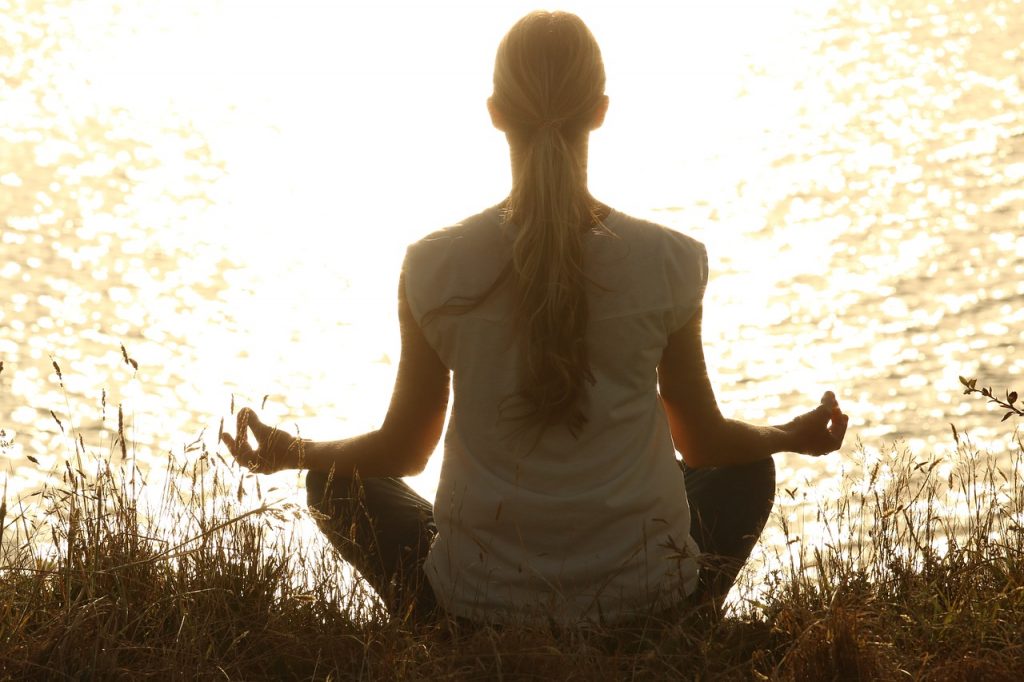What is Zen Meditation?
Zen meditation is another method of meditation. First, let’s check the meaning of Zen, the Japanese word “Zen” is derived from the Chinese word Ch’ao, a translation of the original word Dayana from India (Sanskrit). It is developed in china and meditation is related to the philosophy of Mahayana Buddhism. Many meditation methods are about the body and the mind, how it works etc.
There are many branches of Buddhist philosophy, Two main parts are Mahayana and Theravada, both sections work according to the Buddhist doctrine. In the Mahayana section, some of the monks have added easily observing methods or discipline according to their wishes.
Theravada is the pure philosophy of Lord Buddha which was not changed by any authority which belongs to the teachings of Lord Buddha. Zen meditation is an ancient Buddhist meditation method derived from India. It is similar to mindfulness, in that it is about the presence of mind focusing on a specific object. But Zen meditation is not focusing on one object. It is very subtle. One should practice daily to reach the target level.
Why You Should Meditate?
This meditation tackle deep-rooted issues of Buddhism which helps you to solve general life questions that often seemed to be lack of answers, and it does not base only on practice and intuition, rather than logic
What are the Benefits of Zen Meditation?

Well, there are many. If you practice Zen meditation regularly it cultivates good thoughts and l improves your power of thinking and will change your desires also.
- It provides insight into how the mind works
- Provides tools to cope with depression
- Uncover the innate clarity and workability
- Experience the original nature of the mind
- Awakening experience
1. How the Mind Works
One of the foundations of mindfulness is consciousness, the knowing faculty. One way to develop mindfulness of knowledge is to treat consciousness itself as the object of meditation. It is important to remember the knowing faculty and at the same time, researchers have proved that meditation affects the brain.
They have conducted a Zen meditation session for the people who did this for 3 years and the others were very new to this meditation and finally, with the scanning results of the two sets, it was proved that it affects your brain and it increases your memory power and other healthy and valuable attitudes and concepts which are very helpful to the society and for the wellbeing of the human race.
In addition, they revealed that the results depicted there is a region called “default network” in the brain and it led to different activities with those who had the practice of Zen meditation.
2. Solution for Depression
Someone can feel this every day or at the end of the day. Depression affects both men and women. The mood is a dominant aspect of life, mood disorders lead to a large number of psychiatric conditions such as anger, hatred, etc. It will lessen by this meditation by giving chances to think about others’ feelings and desires comparing with oneself.
3. Clarity and Workability
A big impact may influence your understanding of how you are feeling, taking correct decisions and the influence of the environment may explain by practicing Zen meditation. It will uplift your workability and productivity. It cultivates the spiritual heart in the organ heart.
4. Original Nature of Mind
In any movement of the body, it can sense the knowing faculty as the physical object is apparent. It is important to remember that the knowing faculty and the object arise simultaneously It is possible to dimers the two processes.
They are happening simultaneously, with two different functions. When we walk, see or breathe, the leg, the eye, and the nose do not know, it is the material element. The knowing of the element is the mind or consciousness. We can begin the process of consciousness with the immaterial object. It is very subtle. The immaterial thing will force the mind to be very attentive. It is impossible to experience clearly if the mind is lax or lazy.
5. Awakening
There are some states of mind that could be developed into awareness. That is awakening your mind to keep attentive and calm. Now many rehabilitation institutes use these methods to cure drug addicts
How Can You Practice Zen Meditation?

Zen meditation is very simple yet precise method of meditation, where the correct posture is very important. Practicing of this meditation is at the heart of Zen Buddhism, which is called Dayana in other countries, those who believe in Buddhism.
Zen is practiced sitting on a cushion (thick and round or else you can use a folded thick blanket), in half or full lotus posture. One could use a rectangular mat that is placed under the cushion.
The purpose of this cushion is to elevate your hips, thus forcing the knees to be rooted to the floor. This way you will be more stable and comfortable. If the posture is more comfortable the time you can spend will also be longer and you can concentrate your meditation for a long time and it will give you happiness.
One who is going to practice Zen meditation should pay attention to the posture, it should be comfortable, it is good to use a cushion or sitting on a chair is also acceptable.
The place
You should select a place to meditate, the place should be calm and quiet not disturbed. Most probably you can select a room, where you can practice in should not be too dark or too light, too warm or too cold. Should wear loose comfortable clothes.
Different Postures
There are different postures to meditate, most common postures are:
- Lotus method Full and half lotus method
- Kneeling or else sit on a chair.
You can try any of those methods.
Lotus Method
For the full lotus position put each foot on the opposite thigh. (either foot on top of the opposite thigh) and place the other foot on the floor underneath the other thigh). It needs great flexibility in the hips. It may take some time to get used to this sitting but stability and efficiency are some of the important reasons sitting cross-legged. On the floor works well.
Half Lotus
The other position is half lotus position where the left foot is placed on to the right thigh and the right leg is tucked under. People who use this positioned should make a habit of alternating which leg they bring up
Kneeling
You can kneel without a pillow. Kneeling with your buttocks resting on the upturned feet which form anatomical cushion or else you can use a cushion or a bench to keep your weight off on your ankles and it will help you to keep your spine straight.
How to Keep your Head, Neck, Eyes, and Hands
Head and Neck
With whatever position you choose it is very important to keep your back and neck stay straight. Pull your chin in to erect the neck and try to “push the sky” with the top of your head. Don’t be too tensed or too relaxed while doing this; find balance in your posture. Keep your mouth closed during Zen; your teeth should be together, and your tongue should be against the upper palate just behind your teeth.
The Eyes, Hands & Arms Position
In Zen, both the eyes are kept open during meditation. This prevents the meditator from daydreaming or becoming drowsy. Without focusing on nothing in particular, direct your vision about one meter in front of you on the floor. Your eyes will naturally come to rest in a position that is half opened and half closed. When doing Zen in a meditation hall the meditator sits facing a wall in order to avoid distracted by external movement.
The position of the hands during Zen is the same for the full lotus, half lotus, kneeling and chair positions. This hand position is called the Cosmic Mudra. First, put your left hand on the right one, and palms turned towards the sky. Now, make an oval by touching the tips of the thumbs together so that your thumbs touch each other and form a somewhat straight line.
The tips of your thumbs should lightly touch each other. Both of your wrists should rest on your thighs; the edge of your hands should rest against your belly. Keep your shoulders relaxed.
Method
When you come to meditation the important and the most difficult thing is to select the type or the method. One could use the breath and that is the most common method . When you practice midfulness you can pay attention to other methods also.
Those are called “vipassana”. Once you have settled to the meditation posture. Begin breathing through the nose and give your complete attention to the breath. In the beginning, you should take a beath and pay attention to the air that goes through your nostrils.
In the same way, you can exhale the air. Some are practising the counting method,even without the counting you can continue if you are clever and able to keep your mind on to that. If you count you have to count each inhale and exhale beginning with one, two…….. and up to six or ten then you can repeat the same.
If you try Zen meditation and it is not successful don’t ward off all types of meditation, there is one special type for you. To know your type of meditation refer books related to mindfulness in Buddhism.
Zen is not a theory, an idea, or a piece of knowledge. It is not a dogma or a belief or a religion. It is a philosophy taught by Lord Buddha.


